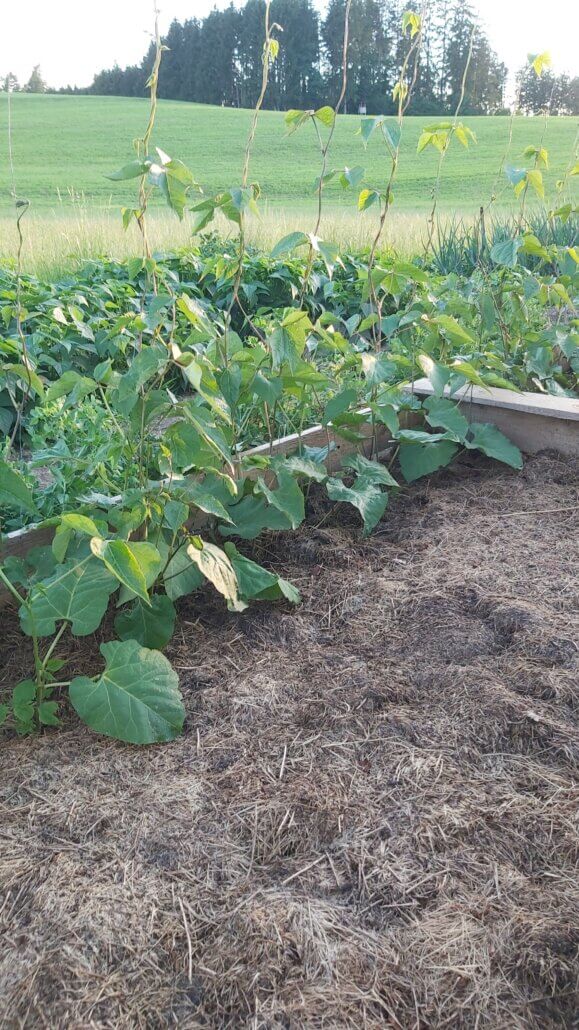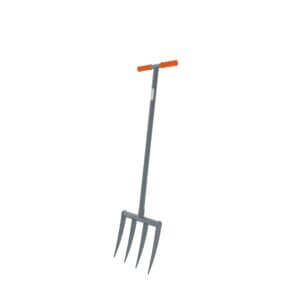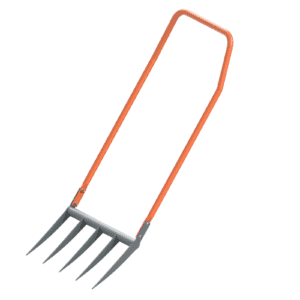Humus formation in the garden
In the following, we would like to provide you with important information on soil cultivation in general, humus formation and optimal care of the soil.
What is humus?
The term “humus” refers to the decomposed, organic content in the top layer of soil. These are primarily carbon (about 60%), oxygen, hydrogen, nitrogen, phosphorus and sulfur. Depending on the soil type and condition, the humus content is between 1.5-5% of the upper, active soil layer.
What is the effect of humus on plants?
A high humus content is indispensable for successful plant growth. It is mainly responsible for a balanced supply of nutrients to the roots. But humus alone cannot yet be utilized by plants. Only through mineralization, i.e. the decomposition of certain humus components, are the relevant nutrients finally available. This occurs naturally through various microorganisms in the soil. However, the type of tillage plays an important role here.
Outdated tillage practices
In the past, tillage was mainly done by regular turning the soil upside down – a complete turning over or rotary-tilling of the top layer of soil. Does a comparable process also occur in nature? No, for several reasons:
1. protect the microorganisms present
Important, natural processes are disturbed during turning and thus prevent a sustainable nutrient balance of the soil. The different microorganisms required to release nutrients from humus occur at different depths. This is because they require unequal oxygen levels and temperatures to survive. Complete inversion of this structure significantly reduces the ability of these organisms to release nutrients.
2. preservation of soil-dwelling species
Other soil-dwelling species, such as earthworms, isopods, ants, etc., lose their habitat as a result of complete turning the soil However, they are responsible for taking up organic material at the earth’s surface, decomposing it and transporting it to deeper layers of the earth. Only in this way do deeper microorganisms receive “replenishment”, which is then available to the plants at the root.
But why has industrial agriculture been achieving ever-increasing yields in recent decades, despite regular tillage of the soil and declining humus content? This is only possible by supplying the above nutrients in the form of mineral and organic fertilizers on a large scale. A practice “on credit” that cannot work in the long run and is a heavy burden on the environment. The use of finite resources (mineral fertilizers) and the import of nutrients from other continents are not sustainable, environmentally sound processes.
Broadfork for humus buildup?
Under these aspects, does it make sense to work the soil at all? Absolutely – but with caution.
Our soils are often compacted. To break through this compaction without destroying the entire structure, the TERRADIX® Broadfork is ideally suited. Soil layers are hardly mixed when they are used and soil organisms can continue to exist undisturbed.
Loosening thus forms the basis for humus buildup and sustainable growth
- Soil-dwelling species are given new habitat by loosening with the Broadfork, and nutrient exchange to deeper areas is encouraged.
- Capillaries form in the loosened soil, which promote water absorption.
- Aeration of compacted soils promotes aerobic microorganisms and thus nutrient availability to plants.
- Plants can root more easily in loose soil, further contributing to loosening.
Thus, as soil quality improves, less and less tillage will be needed over time.
Humus and the climate
Increasing humus content is also essential in relation to climate change. For every 1% increase in humus, about 40 liters more water can be stored per square meter. Tremendous potential for our plants to survive prolonged drought unscathed. The CO2 binding in humus is also impressive. Thus, from a global perspective, a large proportion of man-made CO2 emissions could be compensated for through humus growth.
Accelerate humus buildup
Humus build-up therefore means first and foremost the creation of an intact soil fauna. The key word here is “mulching“, i.e. the permanent covering of the soil surface with organic material. This serves as food for worms, insects and bacteria and is slowly decomposed near the surface (without air exclusion).


Suitable mulch materials include:
- Compost
- Pruning
- Foliage
- Lawn/grass clippings
- Other plant remains
- Crap
By abundantly feeding such materials from other areas of the garden, fertility can thus be “transferred” and provided where it is needed – for example, in your vegetable beds.
It is important that the mulch layeris not too thick (promotes rotting processes), but thick enough that the soil under the mulch does not dry out. A little trial and error is required here, depending on the material used, 5-10 cm is recommended.
Mulching also brings other advantages:
- The water holding capacity of the soil is significantly increased
- Weed is suppressed
The basic aim is to cover the surface of the soil all year round, optimally with living plants (vegetation) and a mulch layer in combination.
Each time before replanting the bed, it is recommended to loosen and aerate the soil with TERRADIX® Broadfork.
-
 TERRADIX® Broadfork 4×25099,90 €
TERRADIX® Broadfork 4×25099,90 €incl. VAT
plus shipping
delivery time: 2-3 workdays
-
 TERRADIX® Broadfork 5×300139,90 €
TERRADIX® Broadfork 5×300139,90 €incl. VAT
plus shipping

